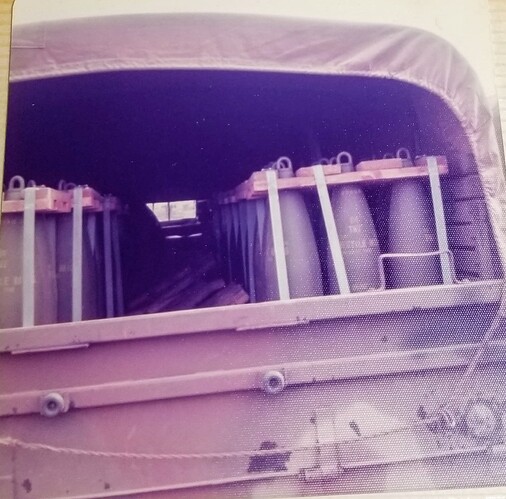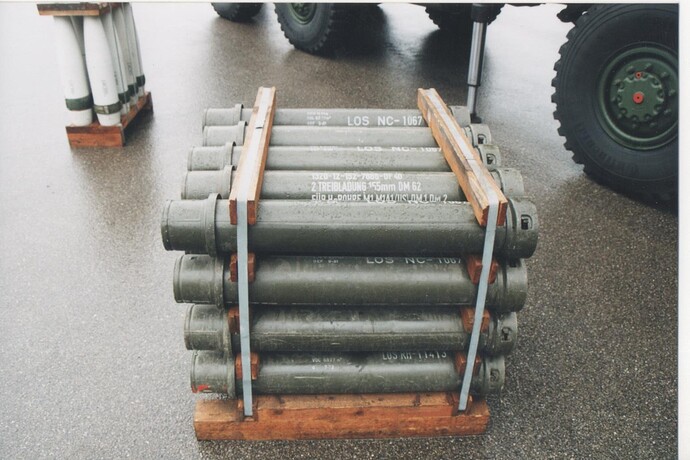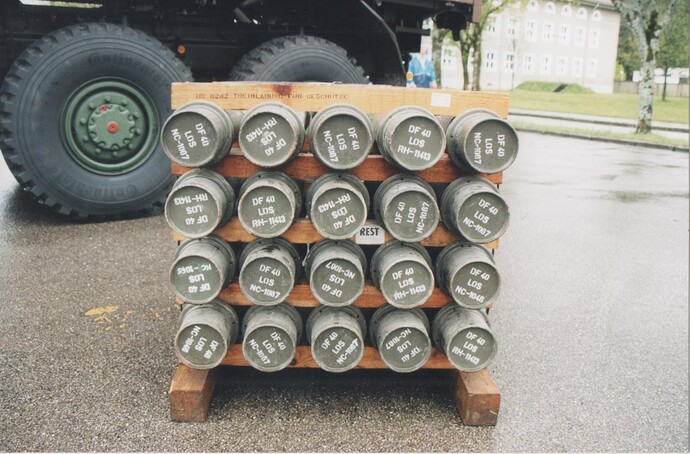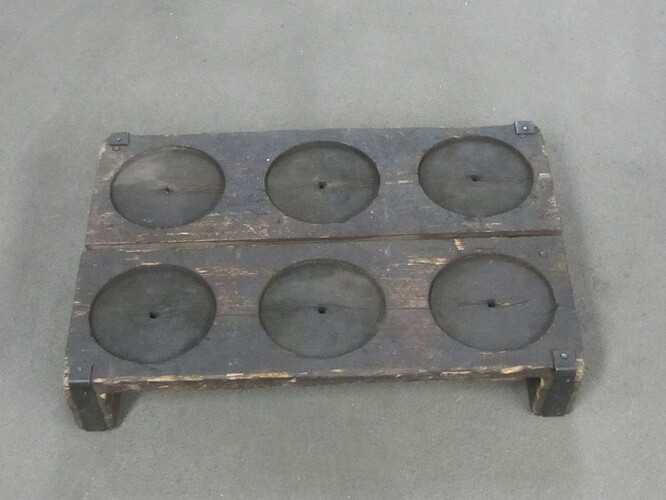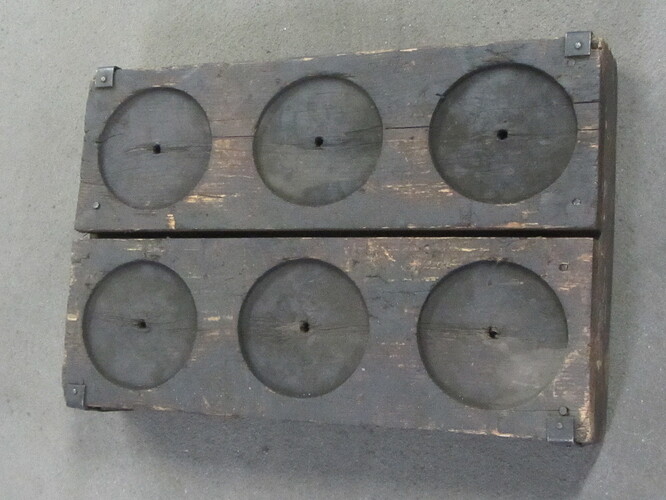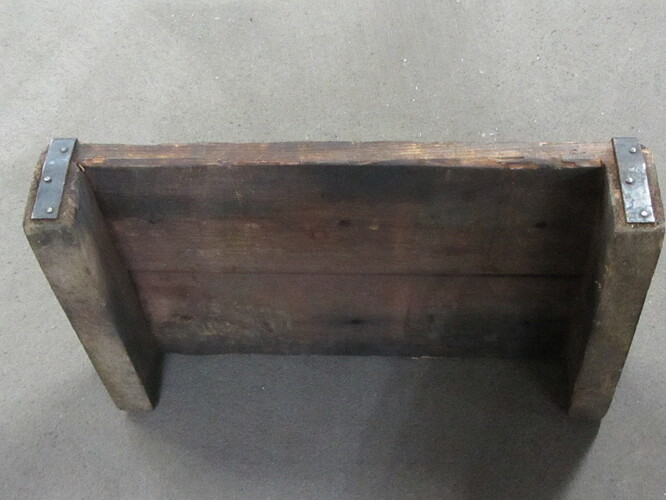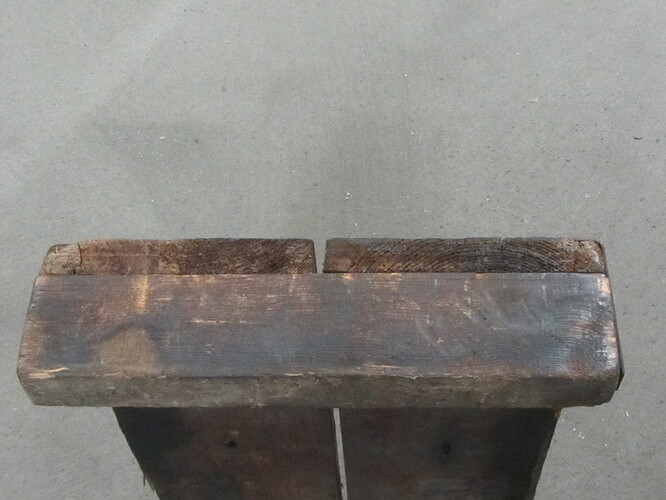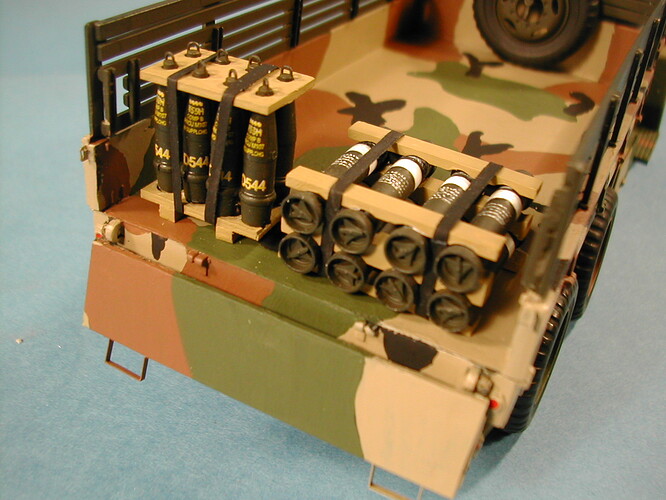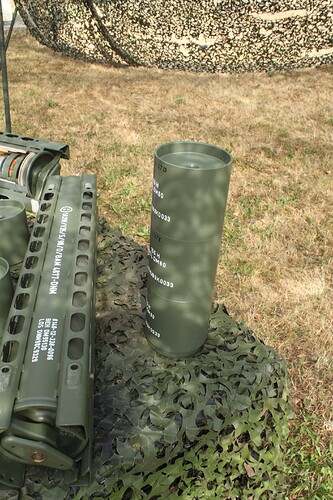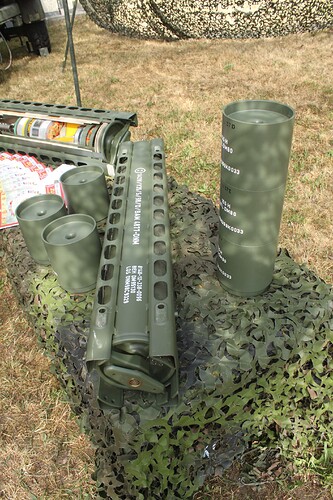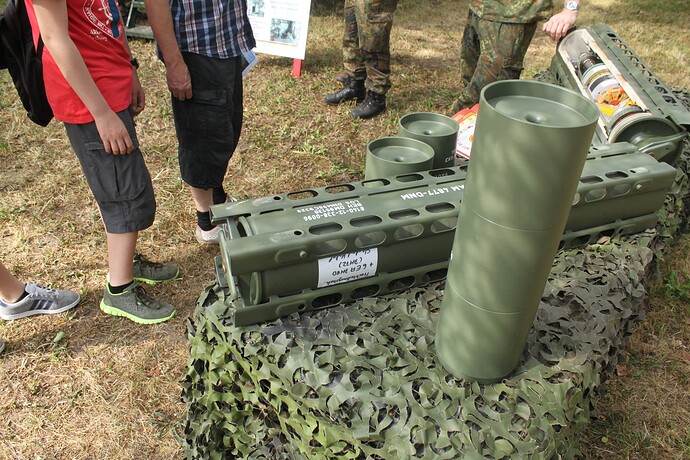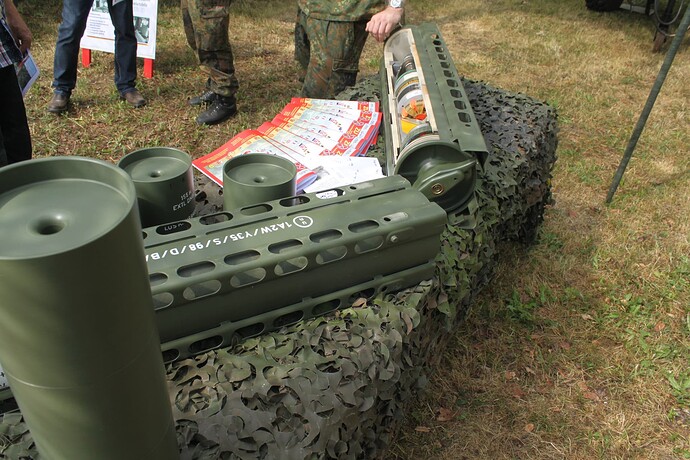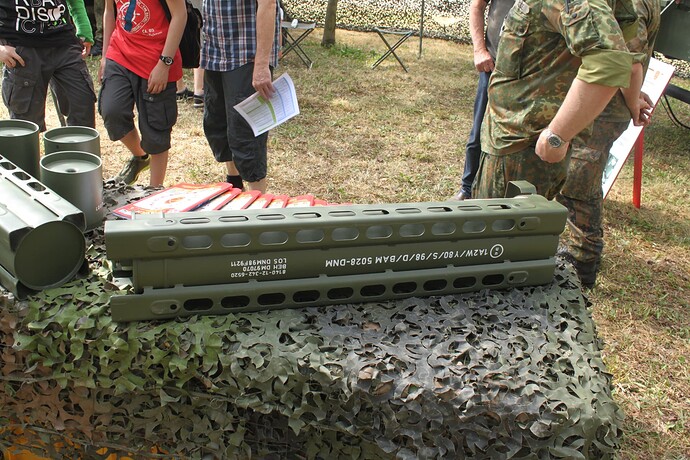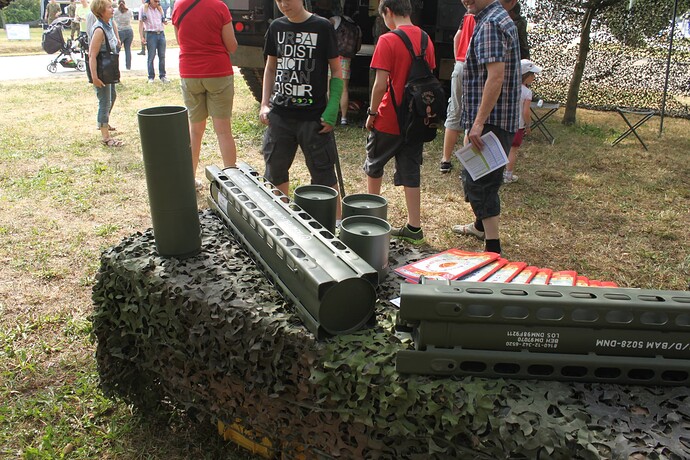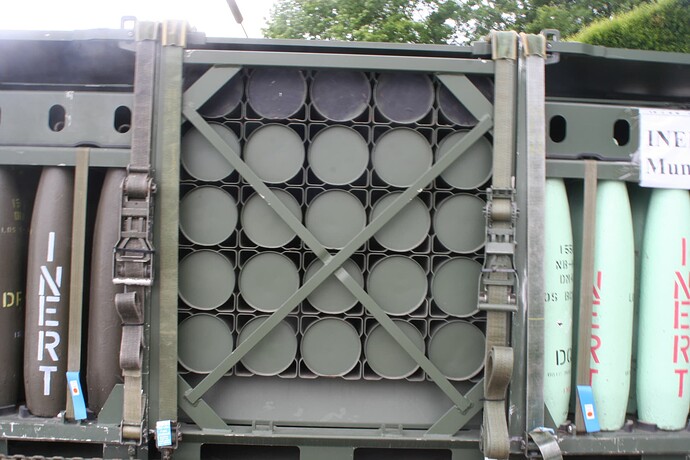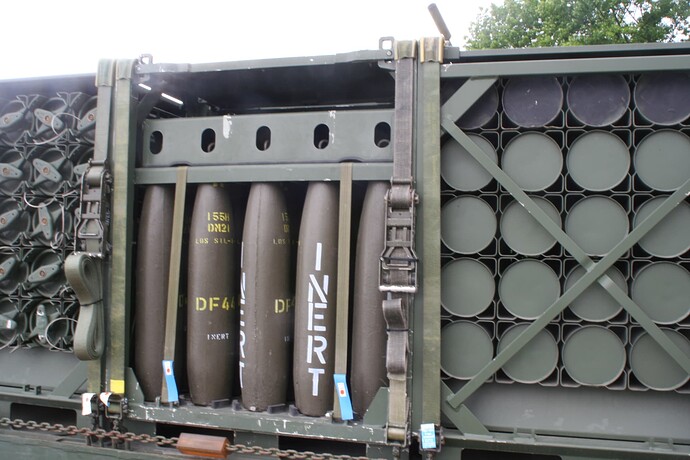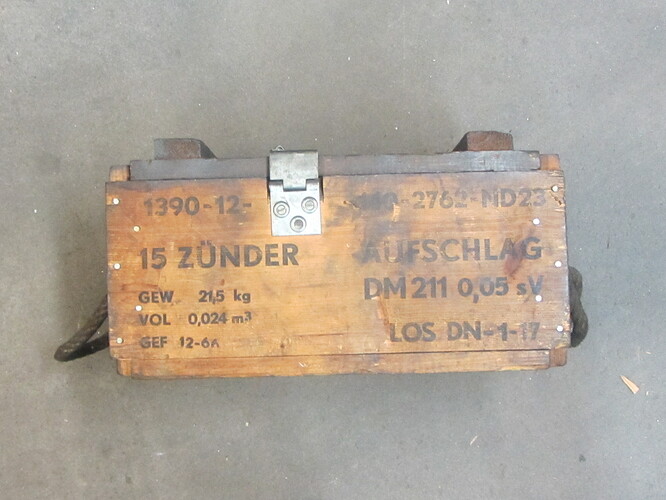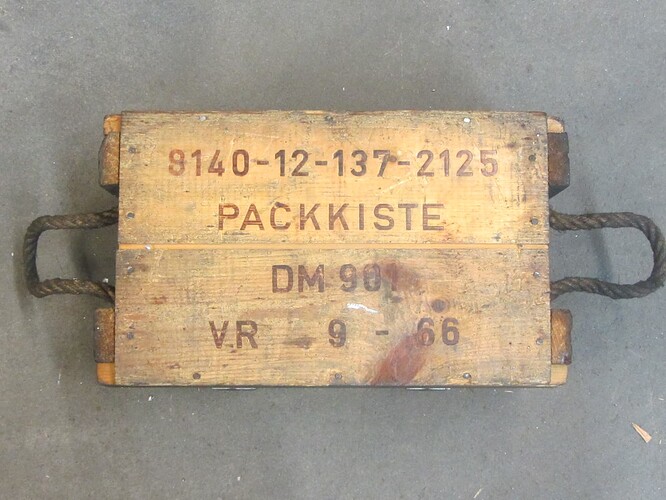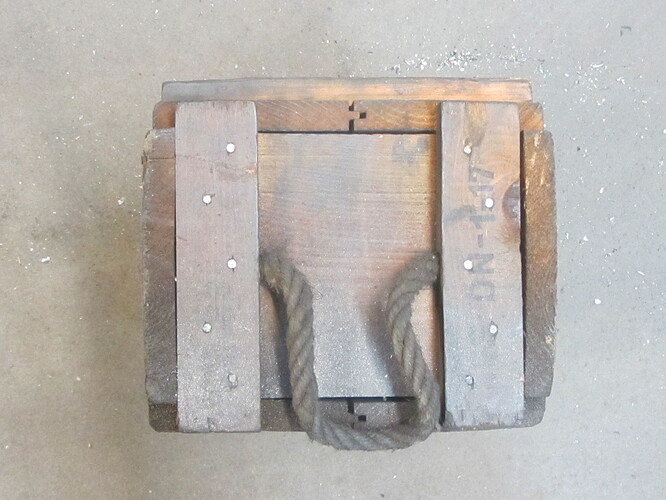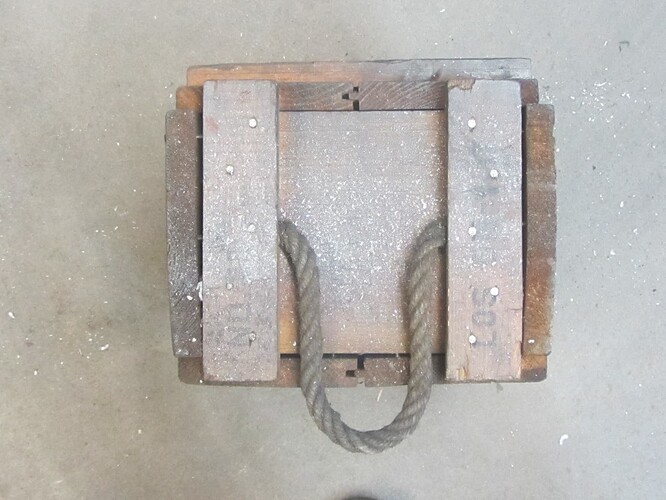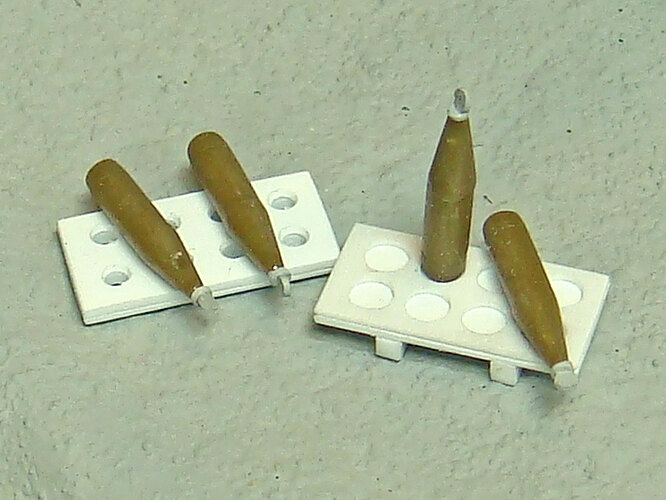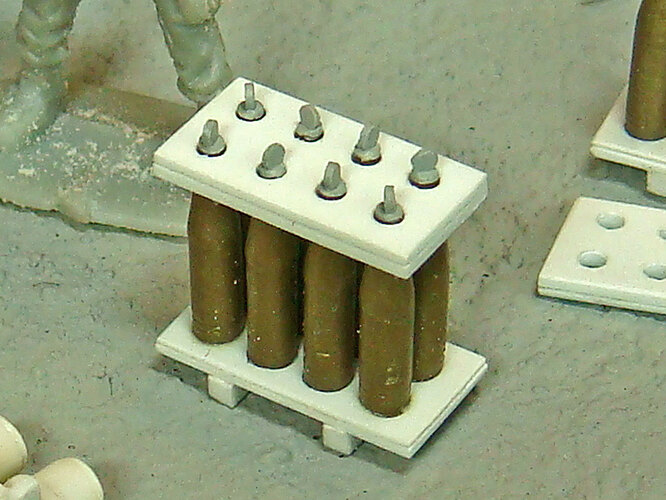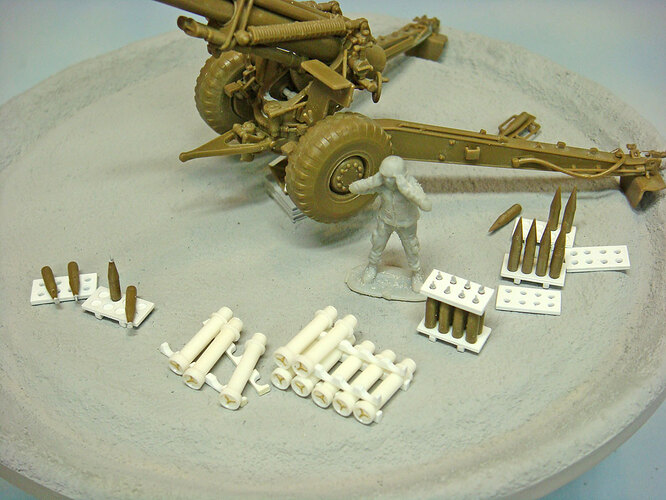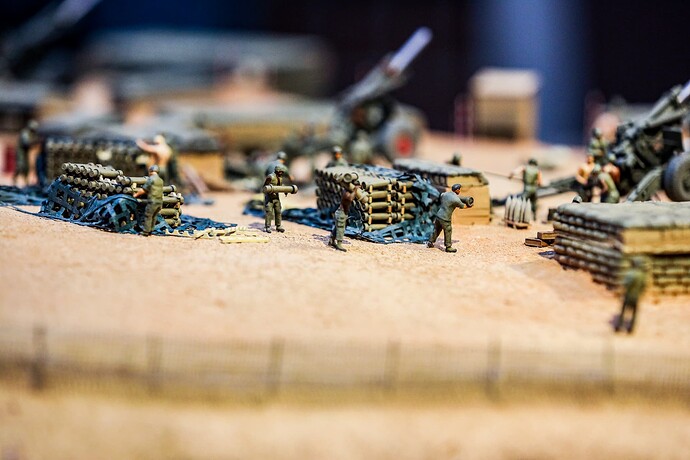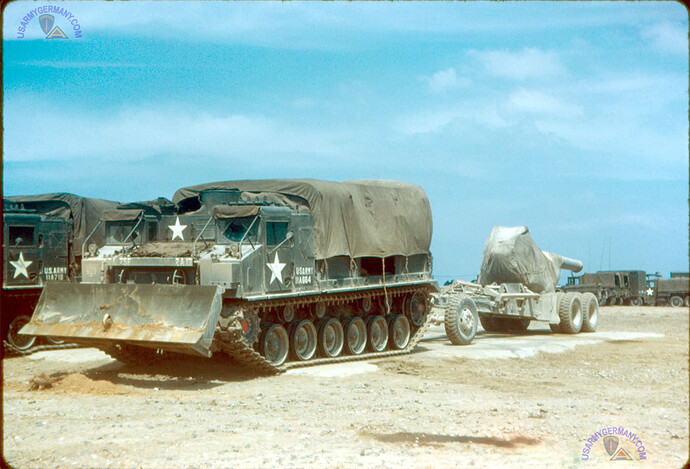Tom Hathaway showed us that 155 mm powder containers are bundled up 8 at a time, with three wooden “spacers” (‘1st Btn 2nd FA in MASSTER’). How are the 203 mm containers prepared for transport - 6 of them in a package, like the corresponding projos on their pallets, again with three wooden parts?
TIA, Peter
The shipping dunnage that I used for the 155mm powder canister (i.e. 8 at at time bundled up with the wooden spacers) is something that I came up with based on a very loose memory that the canisters were shipped as a group to keep them from rolling around and that since the projos came 8 to the pallet (for which there are a ton of photos) it would make sense to do something similar with the powder canisters. So knowing that they were “probably” bundled together for shipment, I came up with that idea.
Full disclosure here: I have absolutely NO photographic documentation that shows for sure that this is ACTUALLY how they were packaged for shipment, but this would be an excellent way to do so. That pallet could easily be stacked, and lifted with a fork lift, and canisters match projos (unlike hot dogs and buns!)
At the time I was doing that build I couldn’t remember how we used to receive them in the field, and when asking on the old site, nobody seemed to know or have any photos.
SO using my dad’s old process, I simply did them the way I thought would make sense, and am perfectly willing to change that construct as soon as I know that it’s not correct.
With that, if somebody has photos of how (and remember my builds depict conditions in the early '70s) the powder canisters are packaged for shipment, I’d love to see them.
And if nobody KNOWS how it was ACTUALLY done back then, why not simply duplicate a 6 pack of 8" canisters in a similar construction?
Either way there’s a solution!
I was in a M110 8" unit at Ft Sill 1976-78. Service battery ammo section. As I recall, we drew ammo straight from the ammo dump. Loaded the 5 ton trucks with 8" projo’s, six to a pallet, with fork lifts. Then each truck pulled an ammo trailer which we loaded up with powder cans. The cans were always loose and we’d just stack them in the trucks or trailers depending on how much we were picking up that day. And then deliver them out to the gun line. I found this photo, wish I would have taken more back then. A lot of manual labor unloading in the ammo section back then.
Thanks for the info Kevin. While I was never in Service Battery, I KNOW how hard the Battalion Ammo section worked, and believe me we appreciated that in the firing batteries!
Because we had a dedicated 3 Truck ammo section (5 Tons with ammo trailers) in each firing battery, our usual SOP was for the Battery Ammo Section to pick up the ammo directly from the Ammo Supply Point.
Our Field SOP was that the Service Battery Ammo section (a total of 9 x 5 Tons with Ammo trailers) would be responsible to go back to a Corps Level Ammo Dump, pick up our Bn Basic Load and bring it forward to the Division ASP. If I remember correctly, Division was the lowest level where there was an Ammo Supply Point. From there each Battery was supposed to draw our ammo based on whatever DivArty specified was our daily Ammo Supply Rate.
As you said, I don’t really remember seeing the powder canisters any other way than loose, but since I didn’t want them rolling around and didn’t want to glue them down I just palletized them. I’m sure that SOMEWHERE back in the supply chain they had to be bundled together some how for shipping. I’d hate to be aboard a ship having those things rolling around!!!
Hi Peter,
can´t tell about 8 inch. But this is how Bundeswehr bundles their propellant canisters for 155 mm.
Maybe the regulations for such stuff changes over the decades?
BTW This is the pallet for 8 inch as used by Bundeswehr.
Thank you so far, everybody. Seems that AFV Club’s 203 mm projo pallets in their AF 35017 set are correct, but that doesn’t offer anything to stick the powder cans together. During WW II, they seem to have been bundled together in triples, with clover leaf-like arresters at the ends, as can be seen in the thread “WW2 US Artillery Ammunition”, contribution 7/50. But, as Hans Hermann says, regulations may have changed over the decades.
So I guess that the design I came up with isn’t all that far off after all!! Thanks for the photo Hermann!
Unfortunatly, no one ever saw arty ammo from the modellers perpective. ![]() Okay, I confess that getting close to ammo is difficult. The pics you are are from an Open House show and are training aids for loading. Btw the projectiles in the background are Betongranaten (concrete projectiles) for simulating the weight of the projetile. Bundeswehr nowdays uses highly sophisticated maens of transporting 155mm rounds and modular charges.
Okay, I confess that getting close to ammo is difficult. The pics you are are from an Open House show and are training aids for loading. Btw the projectiles in the background are Betongranaten (concrete projectiles) for simulating the weight of the projetile. Bundeswehr nowdays uses highly sophisticated maens of transporting 155mm rounds and modular charges.
@PzAufkl Another aspect of artillery ammo are the fuzes.
This:
is the crate for 155mm artillery fuzes. It measures 430mm by 235mm by 250mm.
depending on the era the OP is going for. Fuzes were coming in .50 cal boxes (tall for VT fuzes).
I wonder if 155mm rounds and 203mm rounds can use the same fuzes?
yes. in fact they’re the same for 105mm as well.
One of the really wise decisions from a logistics perspective, having one set of fuzes which are for all three of the main calibers of FA rounds which were commonly used by the US and other NATO countries.
I cannot positively say I’m correct about the 8" howitzer powder crates, but we always got 155 powder in crates that held either 16 or 24 tubes (white bag). Being as the powder charges are fairly similar; I’d think they’d be the same. In the states the powder tubes were always uncrated before we ever saw them, so I don’t know for sure.
I might add here that that 24 tubed crate might well have been 36 tubes now that I think about it. I know the crates were roughly three and a half feet tall, and with a banded together wood frame. I should know, but it’s also been a long while. Also can’t for the life of me remember what green bag powder crates looked like. Fuse boxes were the same, as well as primers
Our powder was usually flown out in a net, and sat down in a five ton truck. Once the truck was full, they made their rounds to various ammo bunkers and kicked it out the back of the truck. SPG’s don’t usually use ammo bunkers unless they are in the rear areas, and often used M548’s instead of trucks
gary
Well, seems that 8" powder canisters are an elusive lot - but I guess I can leave my M548 loaded as I did years ago, or what do you all think?
As long as no one proofs the contrary…
These are 155mm M114 howitzers on FSB RIPCORD. The powder tubes and projectile pallets have been delivered by sling-load directly into the arty position and are being broken down for storage in the ammo bunkers surrounding each piece:
These are the 1/72 scale masters and test fit-ups before casting the rounds, tubes and dunnage for the diorama:
And the finished 155 ammo replenishment vignette on the FSB RIPCORD diorama:
Looks great - but once again, it isn’t 8" ammo…
Now, that is very interesting (apart from a great diorama); what is the significance of the different-coloured wheel hubs? I ask as I note similar on these beasts which I hope to tackle one day with the ancient Nitto tractor in my stash:
Note the colours on the drive sprocket:
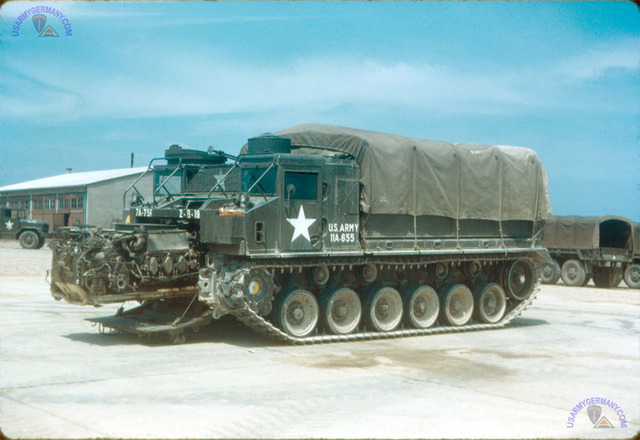
Battery, Troop ID? Individual gun within same? Anybody know?
